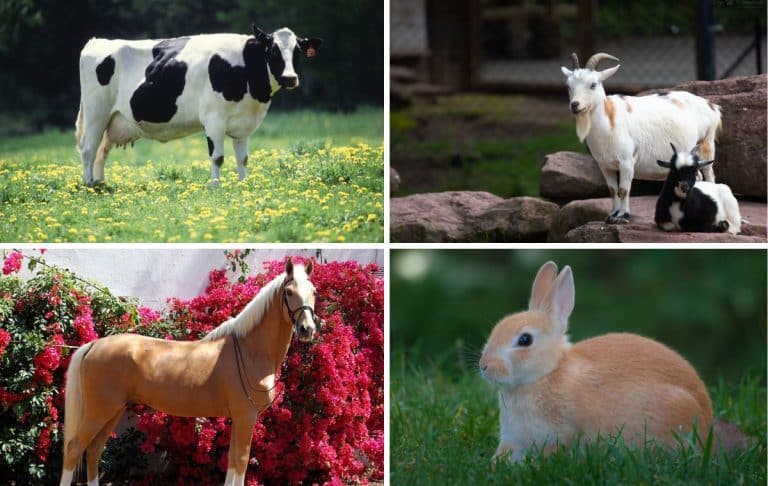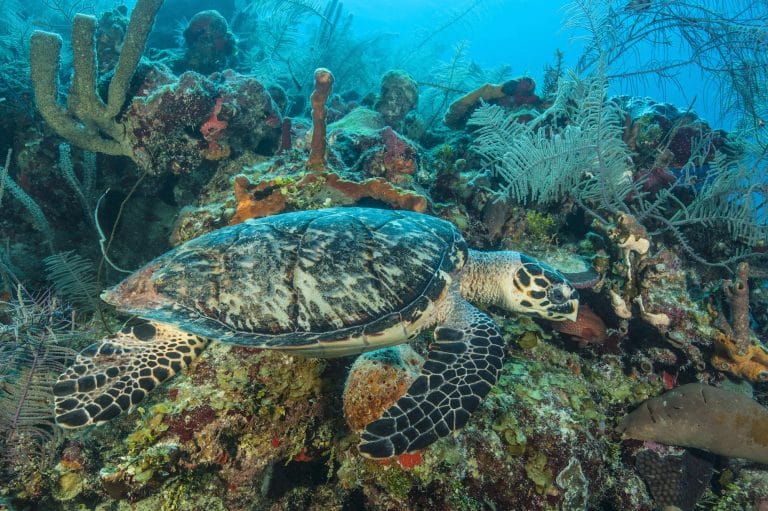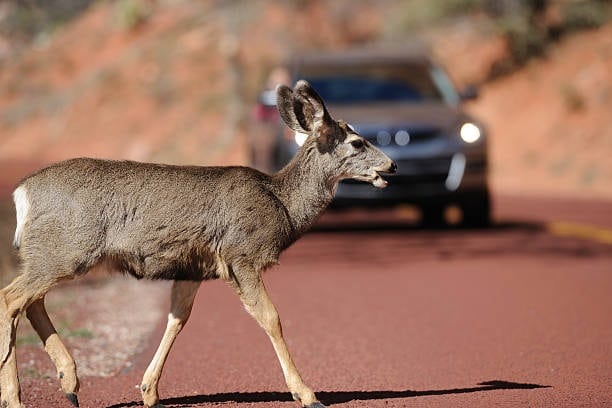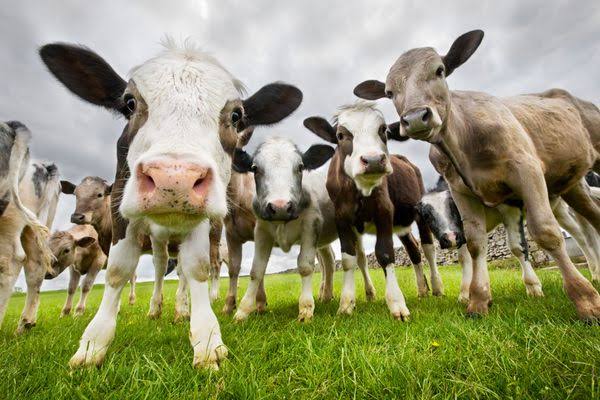Guide: Effects of Deforestation on Animals and Wildlife
Deforestation can cause serious damage to our ecosystem. Deforestation is an environmental issue that has caught global attention due to its far-reaching consequences on our planet’s health.
It refers to clearing or cutting down forests primarily for human activities such as agriculture, urban development, logging, and infrastructure expansion.
We have just mentioned a single aspect of deforestation and not wondered about the effect that it has on animals. Yes, deforestation for animals is much more devastating than it is for humans.
It’s the wrecking of their homes. However, some environmentalists have taken steps to eliminate this issue, but nothing can be done if the laymen take the major steps.
Thus, we have mentioned all the necessary details regarding the cause, effects, and potential solutions to address deforestation, emphasizing its significant environmental impact.
Tune in to learn about deforestation for animals and its adverse effects on the ecosystem.
What is Deforestation?
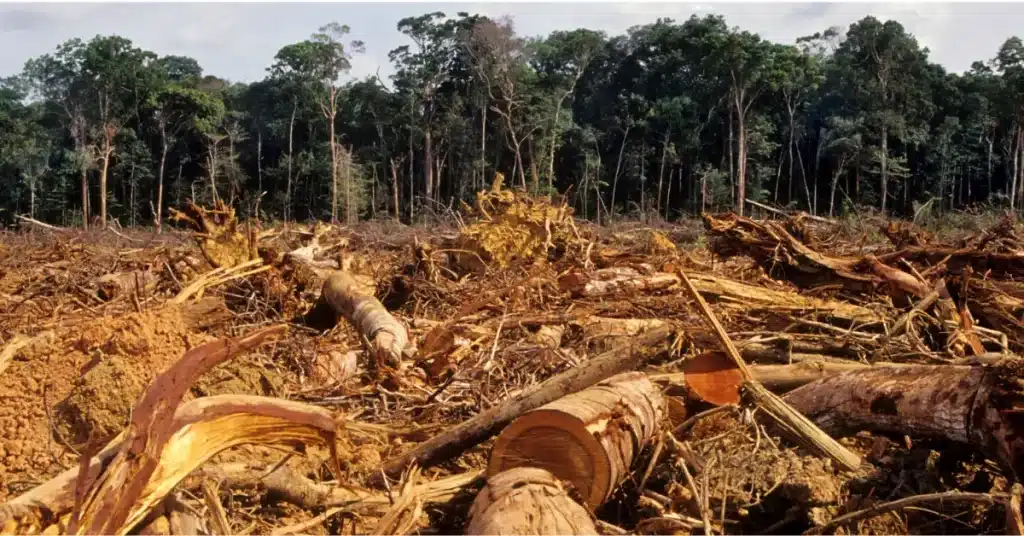
Deforestation is the process of clearing or cutting down forests, resulting in the removal of trees and converting forested land into other uses such as agriculture, urban development, mining, or infrastructure expansion.
This is basically when you turn a piece of land into completely barren land, which was primarily a forest, is called deforestation. It is a significant environmental issue with far-reaching effects on the planet and its inhabitants.
Common Reasons: Why is Deforestation Happening?
Deforestation is driven by a combination of human and natural factors, with the primary cause being:
- Agriculture: The need to feed a growing global population has led to extensive deforestation. Forests are cleared to make way for agricultural activities, such as the cultivation of crops and livestock grazing. The demand for agricultural land often results in large-scale forest clearing, particularly in tropical regions.
- Logging: The timber industry is another major cause of deer forestation. These are harvested for their wood and used in various products, including construction materials, furniture, and paper. Unsustainable logging practices can lead to extensive deforestation and ecosystem disruption.
- Urban Development: The expansion of cities and infrastructure development often requires the removal of forests, roads, highways, buildings, and other urban structures—encroach on forested areas, leading to deforestation, especially in rapidly urbanizing regions.
- Mining: Mining operations, including open pit mining and oil extraction, contribute to large-scale deforestation. These activities not only remove trees but also disrupt ecosystems and can lead to pollution and habitat destruction.
- Infrastructure Development: The construction of infrastructure like dams, bridges, and power plants can necessitate the clearing of forests. This is common in regions where economic development is a priority.
- Climate Change: Climate change indirectly contributes to deforestation. Rising temperatures, altered precipitation patterns, and the increased prevalence of pests and diseases make forests more vulnerable, leading to three mortality and increased wildlife risk. In response, some forests are cleared to reduce these risks.
- Population Growth: As the global population grows, the demand for land and resources increases. It puts pressure on forests as they are cleared to meet the needs of a growing human population.
- Illegal Activities: Illegal logging, land grabbing, and poaching contribute to deforestation. These activities often occur in regions with weak law enforcement and governance.
It is important to note that deforestation can have far-reaching consequences, including the loss of biodiversity, destruction of water cycles, soil erosion, increased greenhouse gas emissions, and negative impacts on local and global climates. Efforts to combat deforestation include sustainable forest management deforestation and afforestation projects.
Effects of Deforestation on Wildlife
There are so many devastating effects of deforestation on wildlife and an urgent need for conversation efforts to mitigate this crisis. Thus, we have mentioned below some major effects of deforestation on wildlife that you can be concerned about.
1. Habitat Loss
Habitat loss is one of the most significant and direct consequences of deforestation on wildlife. It occurs when natural habitats such as forests are destroyed or significantly altered due to the clearing of trees and vegetation. This process leads to many negative effects on wildlife populations and their ecosystems. Below are some major reasons for habitat loss.
- Deforestation involves the removal of trees, shrubs, and other vegetation, which serves as homes and shelter for numerous species. Animals, birds, insects, and even microorganisms rely on these ecosystems for nesting, breeding, and protection from predators. When their habitats are destroyed, these creatures lose their sustainable living spaces.
- Forests are complex ecosystems where various species co-exist in a delicate balance. The removal of trees disrupts this equilibrium. For example, birds may rely on the canopy for nesting, while understory vegetation provides food and shelter for ground-dwelling animals. When these components are removed, their entire food webs can be destabilized, leading to a devastating effect throughout the ecosystem.
- Many wildlife species have specialized diets and depend on flora and fauna found in forests. When these habitats are lost, the availability of food decreases, which creates an imbalance in the ecosystem.
- Habitat loss often reduces the productive success of wildlife. Many species have specific requirements for successful reproduction, such as particular types of vegetation for nesting, and the loss of these resources can hinder their ability to reproduce over time, which leads to declining populations.
- As habitats shrink and species are forced into smaller areas, competition for limited resources, including food, water, and shelter, intensifies. This can result in more frequent conflicts among wildlife and can lead to stress and population decline.
- Habitat loss is not only total sometimes; it results in inhabited fragmentation where remaining habitat patches are isolated. This isolation can have several negative effects.
- Over time, habitat loss can lead to the decline and even extension of wildlife species. Those unable to adapt to the altered involvement, find new habitats, or access the necessary resources are particularly vulnerable.
2. Decline in Biodiversity
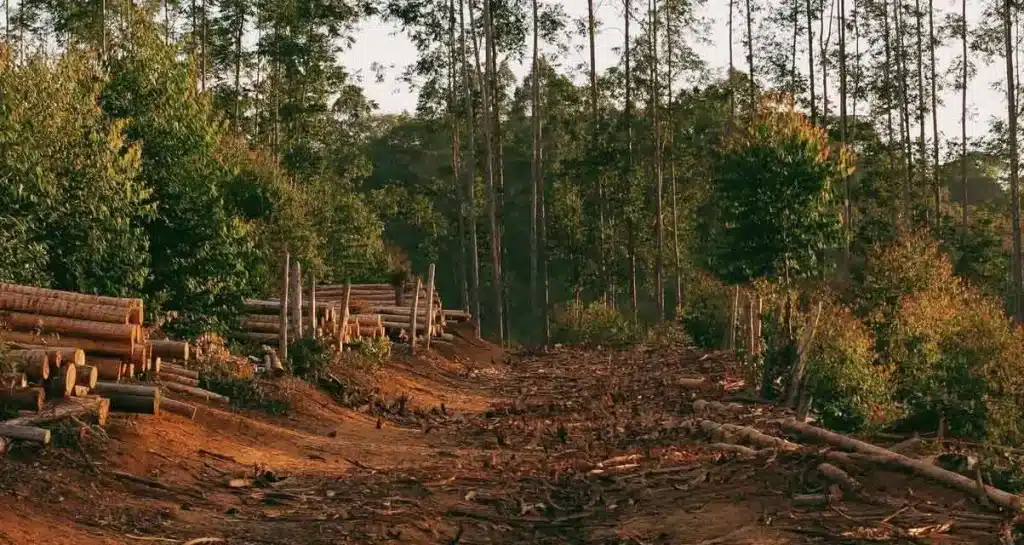
Biodiversity decline is a critical consequence of deforestation as the intricate web of life within forest ecosystems is disrupted and dismantled. Forest teaming with diverse flora and fauna provides a myriad of habitats and niches for a wide range of species. Deforestation, however, eliminates these vital habitats and directly impacts biodiversity in several ways.
The loss of Keystone species, which play pivotal roles in maintaining the structure and functioning of the ecosystem, disrupts the balance of nature. Furthermore, deforestation can lead to changes in predator-prey dynamics, often causing cascading effects on the entire food web. As various species lose their habitats and access to resources, including shelter, food, and breeding sites, they face population declines, competition for limited resources, and even displacement.
Additionally, the disruption of plant-animal interactions can affect pollination and seek dispersal, harming not only individual species but also the regenerative capacity of forestall. These factors contribute to a decline in overall biodiversity, with some species pushed to the brink of extinction due to the loss of their forest habitats and the interconnected relationships they depend on for survival.
3. Fragmentation in Habitat
Habitat fragmentation is a significant and intricate consequence of deforestation that profoundly impacts wildlife. It occurs when large contiguous forested areas are broken into smaller, isolated patches, often separated by human developments, roads, or agricultural lands. This fragmentation disrupts the natural connectivity of ecosystems and poses a multitude of challenges for wildlife.
As forests become divided, the once continuous habitats essential for many species become fragmented islands, limiting the movement of animals and plants. This restriction can lead to several negative effects, including reduced genetic diversity due to limited gene flow, making populations more vulnerable to diseases and environmental changes.
Wildlife may also struggle to access necessary resources such as food and water, establish new territories, or find mates, resulting in decreased resilience and adaptability. Moreover, the altered predation dynamics in fragmented habitats can increase the vulnerability of brace species to predators.
The habited fragmentation can lead to long-term ecological imbalances and challenges for wildlife populations striving to survive in increasingly isolated and disrupted environments.
4. Ecosystem Services
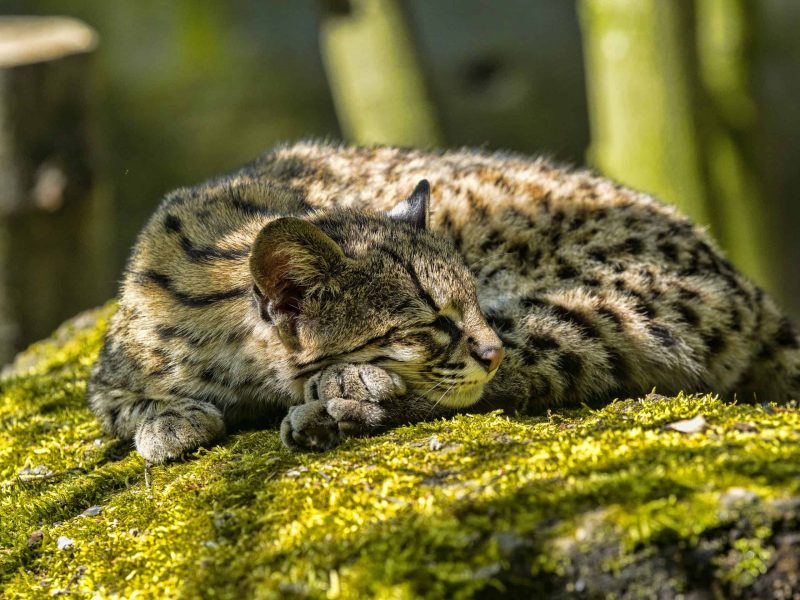
Ecosystem services, a critical component of the natural world, are profoundly affected by deforestation, thereby impacting wildlife and human societies alike. Forests provide many essential ecosystem services, including carbon sequestration, climate regulation, water purification, and soil stabilization.
As deforestation progresses, these services are compromised. The removal of trees leads to an increase in carbon dioxide in the atmosphere, exacerbating global climate change and affecting wildlife habitats. Furthermore, the forest is crucial in regulating local and regional water cycles, influencing groundwater recharge, and preventing floods.
Their loss disrupts these processes, causing issues like reduced water availability affecting wildlife and human communities. Additionally, soil erosion in deforested areas can lead to sedimentation in water bodies, negatively impacting equity ecosystems; thus, the consequences of deforestation on ecosystem services create a ripple effect that directly and indirectly affects wildlife, disrupting their habitats, food sources, and ecological balance.
5. Risk of Wildfires and Droughts
Deforestation significantly elevates the risk of wildfires and droughts, which have profound and cascading effects on wildlife and their habitats. As forests are cleared, the canopy cover that provides shade and retained moisture is lost, making the exposed area more susceptible to drought conditions.
Reduced vegetation also leads to diminished transpiration, the process by which trees release water vapors, affecting the local and regional water cycle. This disruption results in reduced rainfall and an increased likelihood of droughts.
Simultaneously, the accumulation of dry, flammable biomass in deforested areas heightens the risk of wildfires, which can spread rapidly and devastate both flora and fauna. Wildlife faces displacement, injury, and death during these fires, as well as the loss of food sources and shelter. Furthermore, the scorched earth left behind by wildfires can accelerate erosion and soil degradation, impacting water quality.
Consequently, the health of equity ecosystems in this way deforestation sets off a chain reaction that ultimately endangers wildlife and exhibits ecological imbalances, making the preservation of forests crucial for the well-being of both animal and human communities.
6. Starvation

Starvation is a distressing and life-threatening consequence of deforestation for many wildlife species. As forests are cleared, other natural habitats and food sources they provide are lost, and animals often struggle to find adequate nourishment.
The removal of trees and understory vegetation not only eliminates food sources like fruits, leaves, and insects but also disrupts the intricate food web within the forest ecosystem. Many species have specialized diets and rely on the availability of specific plants or prey species uniquely present in forested environments. When these essential resources disappear, wildlife faces food scarcity and malnutrition, leading to population declines, stunted growth, and reduced reproductive success.
For herbivores, the loss of forage can lead to severe undernutrition, while carnivores face a dwindling prey population. Starvation is not only a direct effect of deforestation but also a domino effect, setting off a chain of ecological consequences that impact the entire ecosystem and all its inhabitants.
7. Predators Behavior
Creditors are not immune to the far-reaching effect of deforestation on wildlife. As forests clear, the complex balance of natural ecosystems is disrupted, resulting in numerous challenges for predatory species. The primary impact on predator systems is habitat loss, as many species require large, intact forests for hunting and foraging.
Deforestation fragments these habitats, limiting the availability of pre-species and making it difficult for the predators to find food. In response, they may encroach on human settlements for sustenance, leading to conflicts and often lethal consequences for wildlife and people.
Moreover, as prey populations decline due to habitat destructions, predators face food scarcity, which can lead to declining reproductive success and population declines.
Disrupting these top-down ecological relationships can lead to cascading effects throughout the entire food web, affecting the abundance and diversity of species across the ecosystem. Thus, deforestation affects not only the brain species but also the predators, ultimately altering the dynamics and stability of these intricate ecosystems.
Steps to Prevent Deforestation
A single effort can bring a major change. Thus, practicing steps to prevent deforestation is so important. Deforestation for animals and humans is so devastating. Below are some steps to protect the wildlife.
1. Forest Conservation and Protection
One of the most effective Ways to prevent deforestation is to designate and protect forests as conservation areas or national parks. Establishing these protected zones helps safeguard biodiversity and ensures that ecosystems remain intact. Strict enforcement and monitoring of these areas are essential to prevent illegal lodging and encroachments.
2. Promote Sustainable Logging Practices
For regions where logging is a significant industry, transitioning to sustainable login practices is crucial. Includes selective logging, Reforestation, and adhering to certification programs like the Forest Stewardship Council (FSC). Sustainable logging aims to maintain healthy forest ecosystems and reduce the negative impacts of clear-cutting.
3. Reforestation and Afforestation
Replanting trees in deforested or degraded areas is a key strategy in restoring lost forest cover. Reforestation involves replanting trees in once-forested areas, while afforestation involves pruning treats in areas that were not previously forested. These actions help mitigate the loss of forested land.
4. Promote Agroforestry
Agroforestry is an innovative land-use approach integrating trees and shrubs with agricultural practices. It helps provide farmers with sustainable income sources while preserving forested areas. Agroforestry can reduce the pressure to clear agricultural land and promote the coexistence of trees and crops.
5. Reduce Consumption of Unsustainable Products
Many everyday products contribute to deforestation, such as palm oil, soy, and beef. Consumers can make a difference by choosing certified products as sustainably sourced. This supports companies that adhere to responsible land use practices and can lead to a reduction in deforestation.
6. Implement Stronger Government Policies
Governments play a pivotal role in preventing deforestation. Implementing and enforcing laws and regulations that protect forests and promote responsible land use is essential. Penalties for illegal logging and incentives for reforestation and sustainable land management can make a significant impact.
7. Support Indigenous and Local Communities
Indigenous and local communities often depend on forests for their livelihoods. Recognizing and respecting their land rights can help protect forests, as these communities are often the best stewards of their lands.
8. Educate and Raise Awareness
Educating the public about the importance of forests and the consequences of deforestation is a critical step. Awareness about the value of forests for climate regulation, biodiversity, and human well-being can increase support for conservation efforts.
Effects of Deforestation on Humans

Deforestation has multifaceted and far-reaching effects on humans, from immediate consequences to long-term global-scale impacts. In the short term, deforestation often leads to the displacement of indigenous and local communities who rely on forests for their livelihoods, as their traditional lands are cleared for agriculture, logging, or infrastructure development. This displacement can result in the loss of cultural heritage and traditional knowledge, as well as social and economic upheaval.
Moreover, deforestation can compromise human health in various ways. Reduced forest cover may lead to diminished air and water quality. As far as placing a role in filtering pollutants and regulating local climates, forests also provide a wealth of medical plants and ecosystem services such as pollination, which are crucial for agriculture and food security. The loss of these resources can have direct implications for human well-being.
In the longer term, deforestation is a major contributor to global climate change. Forests act as carbon sinks, absorbing carbon dioxide from the atmosphere and mitigating the greenhouse effect. When trees are cleared and burnt or left to decay, the stored carbon is released, intensifying the problem of rising temperatures and extreme weather events. This can lead to disruptions in agriculture, water resources, and human settlements, posing serious challenges to communities worldwide.
Deforestation also disrupts the water cycle, potentially leading to more frequent droughts and floods. What has maintained soil stability and regulated river flows, and their revel removal can directly affect water availability and quality in some regions. Deforestation can exhibit water six scarcity, leading to conflict and economic changes.
In addition, deforestation can impact economics by diminishing natural resources, affecting industries such as timber, agriculture, and tourism. The loss of biodiversity resulting from deforestation can undermine food security and the resilience of ecosystems to environmental changes, affecting the overall health and well-being of human societies.
Which Animals Are Largely Affected by Deforestation?
Deforestation poses a severe threat to several vulnerable animal species. Willow is the list that comprises some of the most critical endangered and at-risk animals facing the devastating consequences of habitat loss due to deforestation:
- Sumatran, Javan, and Black Rhinos
- Orangutans
- Gorillas
- Chimpanzees
- Pandas
- Pygmy Sloth
- Bornean Pygmy and African Forest Elephants
- Leopards
- Tigers
These animals are not only charismatic and beautiful but also play a crucial role in maintaining the ecological balance of representative habitats. The loss of their forest homes not only threatens their population but can also lead to disruptions in entire ecosystems.
Protecting these species and their habitats is not only a conservation imperative but also essential for the well-being of our planet’s biodiversity. Deforestation affects these animals the most, and their continued existence depends on our collective efforts to halt the destruction of their forested habitats.
Conclusion
Deforestation is a critical global issue that has wide-ranging environmental and societal implications. As we continue to recognize the importance of forests in mitigating climate change, preserving biodiversity, and ensuring the well-being of communities, it is essential to take action to combat deforestation.
First, sustainable practices, responsible consumer choices, and government policies can help mitigate this environmental crisis and protect the world’s forests for future generations. Moreover, addressing deforestation is vital for the preservation of natural ecosystems and the well-being of both the environment and human societies.
Conservation efforts, habitat protection, and sustainable land use practices are essential to mitigating these impacts and preserving the incredible diversity of life on our planet. Everyone has a role to play in the fight against deforestation, and by acting collectively, we can make a meaningful impact in protecting our invaluable forests.
Frequently Asked Questions
How Can Individuals Help Combat Deforestation?
Individuals can make a difference by choosing sustainably sourced products, reducing their consumption of products linked to deforestation, supporting conservation organizations, and spreading awareness about the importance of forests.
Are There International Efforts to Combat Deforestation?
Yes, international agreements and initiatives, such as the United Nations’ REDD+ program (Reducing Emissions from Deforestation and Forest Degradation), aim to tackle deforestation by providing incentives for forest conservation and sustainable land-use practices on a global scale.
How Does Deforestation Contribute to Climate Change?
Forests act as carbon sinks, absorbing carbon dioxide from the atmosphere. When trees are cut down or burned, the stored carbon is released, contributing to the greenhouse effect and global warming.
What are the Primary Causes of Deforestation?
Deforestation is primarily driven by factors such as agriculture (land conversion for farming), logging (timber and wood extraction), urban development (expanding cities and infrastructure), mining, and infrastructure development. Climate change, population growth, and illegal activities also contribute to deforestation.
What are the Economic Impacts of Deforestation?
Deforestation can lead to resource scarcity, decreased natural resource-based industries, and conflicts over land and resources. It can also impact regions’ economies that rely on forestry and ecotourism.


